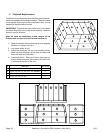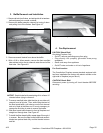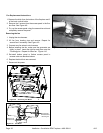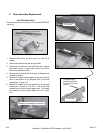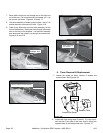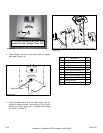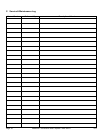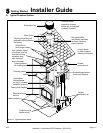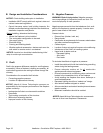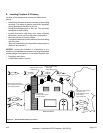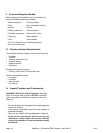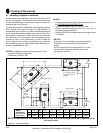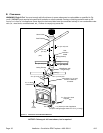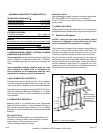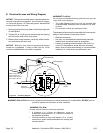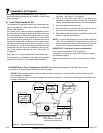Special offers from our partners!

Find Replacement BBQ Parts for 20,308 Models. Repair your BBQ today.

Page 32
Heatilator • Constitution EPA Fireplace • 480-1091H
4/12
B. Design and Installation Considerations
• Installation MUST comply with local, regional, state and
national codes and regulations.
• Consult insurance carrier, local building inspector, re
ofcials or authorities having jurisdiction over restrictions,
installation inspection and permits.
Before installing, determine the following:
• Where the replace is to be installed
• The vent system conguration to be used
• Gas supply piping
• Electrical wiring
• Framing and nishing details
• Whether optional accessories—devices such as a fan,
wall switch or remote control —are desired
C. Draft
Draft is the pressure difference needed to vent replaces
successfully. When a replace is drafting successfully, all
combustion byproducts are exiting the home through the
chimney.
Considerations for successful draft include:
• Preventing negative pressure
• Location of replace and chimney
D. Negative Pressure
Negative pressure results from the imbalance of air avail-
able for the replace to operate properly. It can be stron-
gest in lower levels of the house.
Causes include:
• Exhaust fans (kitchen, bath, etc.)
• Range hoods
• Combustion air requirements for furnaces, water heaters
and other combustion appliances
• Clothes dryers
• Location of return-air vents to furnace or air conditioning
• Imbalances of the HVAC air handling system
• Upper level air leaks such as:
- Recessed lighting
- Attic hatch
- Duct leaks
To minimize the effects of negative air pressure:
• Install the outside air kit with the intake facing prevailing
winds during the heating season
• Ensure adequate outdoor air for all combustion
appliances and exhaust equipment
• Ensure furnace and air conditioning return vents are not
located in the immediate vicinity of the replace
• Avoid installing the replace near doors, walkways or
small isolated spaces
• Recessed lighting should be a “sealed can” design
• Attic hatches weather stripped or sealed
• Attic mounted duct work and air handler joints and seams
taped or sealed
• Basement installations should be avoided



